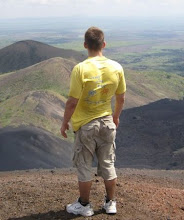PART I HERE
 In 1984 the FSLN held onto power in a decisive electoral victory. By 1990, however, economic sanctions and brutal civil war had taken their toll. “
In 1984 the FSLN held onto power in a decisive electoral victory. By 1990, however, economic sanctions and brutal civil war had taken their toll. “Nicaragua
 In 1984 the FSLN held onto power in a decisive electoral victory. By 1990, however, economic sanctions and brutal civil war had taken their toll. “
In 1984 the FSLN held onto power in a decisive electoral victory. By 1990, however, economic sanctions and brutal civil war had taken their toll. “The World Bank resumed lending in 1992 with the ascent of Chamorro to the presidency.[3] The first small agreement with the IMF was not reached until 1993, long after the downfall of the Sandinista revolution.[4] While the majority of the loans under the World Bank were processed through the International Development Association, its “low-cost lending arm” that provides loans ostensibly interest fee,[5]
Even more onerous than the debt are the crushing conditionalities that are strictly applied to loans from these institutions. These conditionalities have to be met in order to receive funding and are the main economic tools utilized to exploit third world nations. Some of the fundamental tenets include severely reducing the public sector’s role in society, forced privatization, and the tearing open of the country’s economy to foreign capital. In a plan outlined in 1998 by the IMF,
By 2008, many of these measures had been accomplished. An IMF report for that year maintained that GDP growth had been 3.8% in 2007 and a consistent 2-4% before that. Over three-hundred state enterprises have been privatized since the early 1990’s.[10] It claimed that
The agroexport model so heavily pushed by foreign interests has failed the Nicaraguan people as well. “Until 2000, coffee had been Nicaragua's main foreign exchange earner…After years of World Bank pushing countries (especially Vietnam) to plant this cash crop, the coffee sector in Nicaragua, as elsewhere, has collapsed.”[13] Subsequently, massive migration from rural areas to urban areas has drastically increased the plight of the urban working class as they struggle to find jobs with decent wages or any employment at all. Over half of the working-age population suffers from underemployment and the significant majority of Nicaraguans survive on less than two dollars a day. The cost of a basic basket of goods has doubled since the 1990’s for families and the prices of water and electricity have increased fivefold while real wages have remained stagnant.[14] This has cultivated a dual-economy in
It is apparent, then, that
“What's called trade isn't trade in any serious sense of the term. Much of what's called trade is just internal transactions, inside a big corporation... by now it's estimated that about 40% of what's called world trade is internal to corporations. That means centrally-managed transactions run by a very visible hand with major market distortions of all kinds, sometimes called a system of corporate mercantilism, which is fairly accurate.”[16]
It is well understood by the people of Nicaragua Nicaragua
Participatory development, the utilization of limited technology and labor-intensive methods that traditional rural sectors are familiar with, could provide individual solutions in individual communities. It is not, however, a panacea for all of
Popular protests against privatization and pressure on local legislators have stalled some neoliberal offensives. Still, the projectory has been increasingly to the right in the past thirty years. This has only just changed with the vote for Ortega, who in the hearts and minds of the Nicaraguan people represented a shift away from the neoliberal economic model. It is clear, however, that he remains committed to the corporate world and private interests, not the masses.[17] If
[1] Westen, “Ortega Wins Nicaraguan Elections: Where To Now?”
[2] Lanuza, “Nicaragua
[3] “Chronology of the World Bank,” International Socialist Review
[4] “Nicaragua
[5] “Nicaragua
[6] Kimmo Lehtonen, “Most of Nicaragua’s Foreign Debt Canceled,” Kepa (2004); http://www.kepa.fi/international/english/information/newsletter/2004/3817
[7]http://web.worldbank.org/WBSITE/EXTERNAL/COUNTRIES/LACEXT/NICARAGUAEXTN/0,,menuPK:258694~pagePK:141159~piPK:141110~theSitePK:258689,00.html
[8] Solo, “Neo-liberal Nicaragua,”
[9] Michael Camdessus, “Nicaragua
[10] Solo, “Neo-liberal Nicaragua
[11] Camdessus, “Nicaragua
[12] Rose-Marie Avin, “Free Trade Zones and Women I Nicaragua
[13] Solo, “Neo-liberal Nicaragua,”
[14] Ibid.
[15] Westen, “Ortega Wins Nicaraguan Elections: Where To Now?”
[16] http://www.lipmagazine.org/articles/featchomsky_63_p.htm; He further outlines this critique of neoliberalism when he applies it to the United States United States United States
[17] When I traveled to Nicaragua in the summer of 2009, the people that I spoke to in the city of León about Ortega were often quite willing to point out his shifts to the right (being baptized Catholic and passing strong anti-abortion legislation, submitting to private business, etc.) and the fact that he owned multiple mansions as evidence of his being completely bought off.







